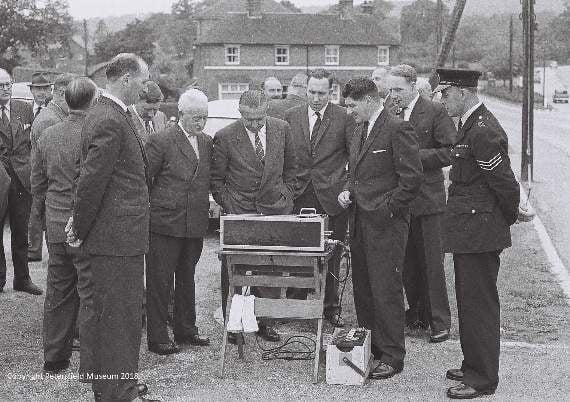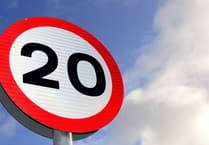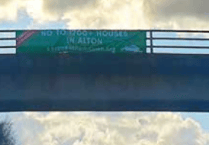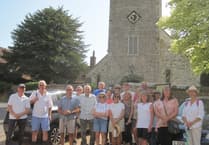A NEW book by Petersfield Museum, Policing Petersfield: 1840–2016, is about to be launched.
It chronicles the story of police in Petersfield from the early days as one of the original 12 divisions of the newly created Hampshire Constabulary in 1840 to the closure of the town’s police station in September 2016.
Written by historian Diana Syms and including more than 140 photographs, the book allows us to share previously unknown stories of policing in Petersfield.
Now a regular sight along our roads, police speed cameras were first introduced in the early 1960s and revolutionised the policing and prosecution of speeding motorists.
Some of the early examples of using radar systems for measuring and recording the speed of road vehicles took place on the forecourt of the Welcome Inn on Winchester Road in Petersfield, near where Meon Close is today.
The rather large and bulky equipment, seen in the photograph, was transported in the back of an unmarked police van and then set up on the pavement or roadside.
As with modern equipment, these early radar stations had to follow strict regulations to ensure any prosecutions brought as a result of their use were able to stand up in court.
These included that the equipment was set up at least 200 yards inside the relevant speed limit, with the beam projecting into the road at an angle.
A patrol car with a speedometer certified by Smiths Industries then drove past the equipment at exactly 30mph.
This was to check that the meter showed the same speed to confirm accuracy.
The same procedure was followed at the end of a patrol to confirm that the equipment was still recording accurately.
On the A3, south of Butser Hill, there were two anonymous white marker posts one mile apart and certified by the Highways Department.
Drivers of patrol cars had to check their calibrated speedometers with a stopwatch over this measured distance.
Every three months the traffic sergeant at Petersfield took the stopwatch to the local jeweller, Picketts and Pursers, to be checked and certified for accuracy.
The police radar systems have significantly developed over the years, with hand-held equipment being used as well as the highly recognisable mobile police enforcement vehicles which are often seen around.
Traffic enforcement cameras may also be mounted beside or over a road to detect motoring offences.
The first speed cameras housed in yellow boxes and mounted on posts appeared on Britain’s roads towards the end of 1992.
In 2019 a new highly developed speed camera was introduced which not only catches speeding motorists but can spot drivers not wearing seatbelts, on their mobile phones and even middle lane hogging.
Until very recently it was not uncommon to find the police calibrating their hand-held speed guns in the courtyard behind the museum where the markers were still present from its days as a police station.
This is just one of the amazing stories that can be found in the new book, which will be launched during an event in St Peter’s Church Hall on November 9 at 2pm. There is a chance to meet the author, get a signed copy, see images of Petersfield’s emergency services from Don Eade’s collection and view police objects from the museum’s collection.




